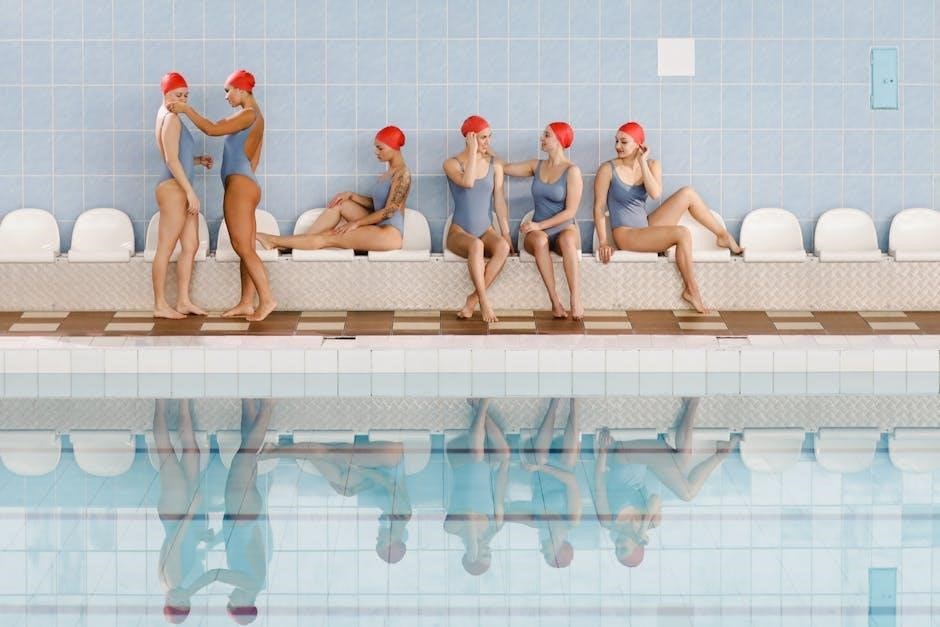A swimming pool plumbing layout is a critical design aspect ensuring efficient water circulation. A clear layout guides water flow through pumps, filters, and pipes, balancing pressure and supporting maintenance.
Overview of Swimming Pool Plumbing Layout

A swimming pool plumbing layout provides a detailed blueprint of the circulation system, including pipes, pumps, filters, and valves. It illustrates how water flows from skimmers and drains through the filtration system and back into the pool via return lines. A well-designed layout ensures efficient water circulation, balanced pressure, and proper maintenance access. It also helps identify potential issues like dead zones or suction entrapment. Diagrams and plans, often available as PDF guides, offer visual representations of the system, making installation and troubleshooting easier. Understanding the layout is crucial for ensuring the pool operates safely and efficiently, while complying with safety standards and hydraulic principles.
Importance of Proper Plumbing Design
Proper swimming pool plumbing design is essential for ensuring efficient water circulation, maintaining clean water, and reducing energy costs. A well-planned layout prevents issues like pressure imbalances, dead zones, and blockages, which can lead to poor water quality and increased maintenance. It also enhances safety by minimizing risks of suction entrapment and ensuring compliance with safety standards. A correct design optimizes pump and filter performance, prolonging equipment lifespan and reducing operational expenses. Additionally, it simplifies maintenance and troubleshooting, as clear access points and logical pipe routing make repairs easier. Investing in a well-designed plumbing system ensures a safe, efficient, and enjoyable swimming experience. Proper design also supports the integration of additional features like heaters and sanitization systems seamlessly. PDF guides provide detailed insights and layouts to achieve these benefits.
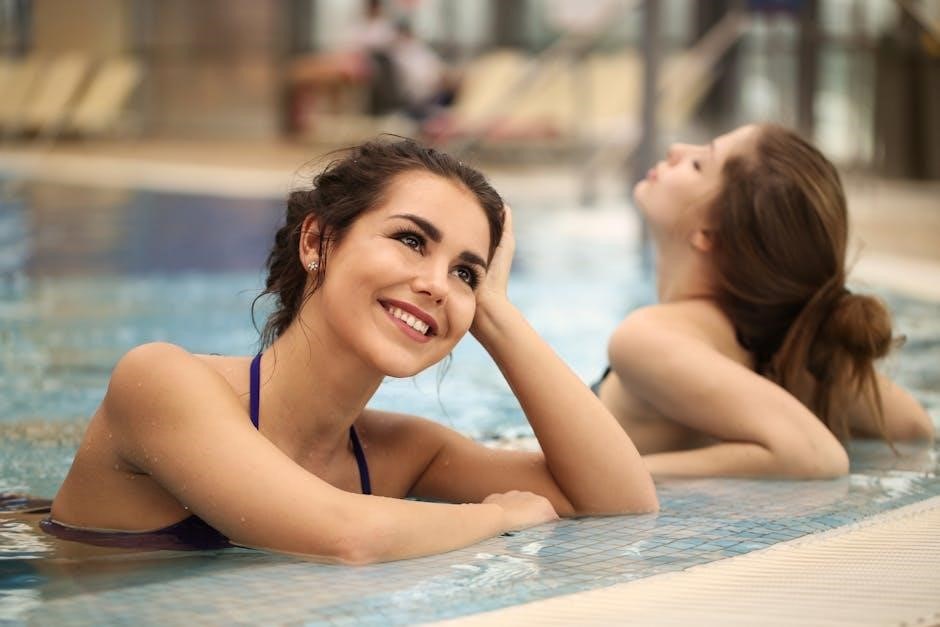
Key Components of Swimming Pool Plumbing
The primary components include pumps, filters, valves, pipes, drains, skimmers, return lines, and heaters. These elements work together to circulate, clean, and heat the water efficiently. PDF guides detail their roles and connections in the system.
Pumps and Their Role in Circulation
Pumps are the heart of swimming pool circulation, drawing water from skimmers and drains, pushing it through filters, and returning it clean. Proper pump sizing ensures efficient flow rates and pressure balance. PDF guides detail pump types, such as single-speed, two-speed, and variable-speed models, emphasizing energy efficiency. Correct installation and maintenance are crucial for optimal performance, ensuring clean water and supporting heating systems. Pumps must be sized to match pool volume and piping layout for effective circulation.
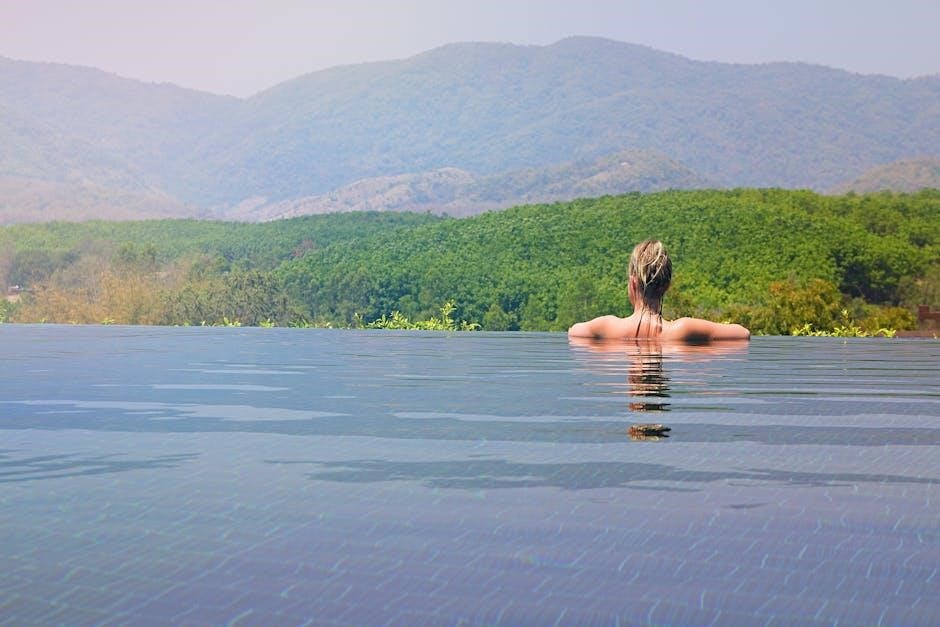
Filters: Types and Functions
Filters are essential for maintaining clean and safe swimming pool water by removing dirt, debris, and contaminants. Common types include cartridge, sand, and diatomaceous earth (DE) filters. Cartridge filters are easy to maintain and ideal for small pools, while sand filters offer durability and simplicity. DE filters provide the highest level of filtration but require more maintenance. Proper sizing and installation ensure efficient water cleaning and circulation. Regular maintenance, such as cleaning or replacing filter media, is critical for optimal performance. PDF guides detail filter types, functions, and installation best practices, ensuring a clear and sanitary swimming environment. Correct filter selection and maintenance are vital for pool hygiene and longevity.
Valves: Gate, Ball, and Check Valves
Valves play a crucial role in swimming pool plumbing systems, regulating water flow and ensuring efficient operation. Gate valves are commonly used for on/off control of water flow, offering a full opening for minimal pressure drop. Ball valves provide precise control and durability, ideal for high-pressure applications. Check valves prevent backflow by allowing water to flow in only one direction, protecting equipment from potential damage. Proper sizing and installation of these valves are essential for maintaining optimal water circulation and pressure balance. Regular maintenance, such as lubricating or replacing seals, ensures smooth operation. PDF guides often include detailed diagrams and specifications for valve placement and sizing, helping to ensure a well-designed plumbing system for safe and efficient pool operation.
Pipes: Materials and Sizing
Pipes are a critical component in swimming pool plumbing, requiring careful selection of materials and sizing to ensure optimal performance. Common materials include PVC, ABS, and CPVC, chosen for their durability, resistance to chemicals, and UV protection. Pipe sizing must align with the system’s flow rate and pressure requirements to prevent inefficiencies or damage. Proper sizing ensures smooth water circulation, minimizes pressure drops, and supports the overall hydraulic design. Guidelines often recommend specific diameters for main drains, skimmers, and return lines to maintain balanced flow rates. Adhering to industry standards and manufacturer recommendations is essential for a reliable and long-lasting plumbing system. PDF guides typically provide detailed charts and sizing tables to help designers and installers make informed decisions.
Drains and Skimmers: Placement and Design
Drains and skimmers are essential for efficient water circulation in swimming pools. Proper placement ensures even water flow, preventing dead zones and maintaining clarity. Skimmers are typically positioned along the pool’s perimeter, while main drains are located at the bottom. Their design must comply with safety standards to avoid hazards like suction entrapment. The number and spacing of skimmers depend on pool size and shape. Drains should be spaced to ensure balanced water circulation. Outlet sizing and piping connections are critical for optimal flow rates. PDF guides often provide detailed diagrams illustrating ideal placements and configurations to ensure safe and effective operation. Proper installation enhances both performance and safety, making these components vital to the overall plumbing system.
Return Lines and Fittings
Return lines and fittings play a vital role in swimming pool plumbing by redistributing filtered water evenly throughout the pool. Properly designed return lines ensure balanced water circulation, preventing dead zones and maintaining consistent water quality. Fittings, such as elbow connectors and check valves, are essential for directing water flow and preventing backflow. Materials like PVC or ABS are commonly used for durability and resistance to corrosion. The placement of return line fittings, such as eyeball or jet fittings, can enhance water circulation patterns. PDF guides provide detailed diagrams to illustrate optimal return line layouts and fitting configurations. Correct installation ensures efficient water distribution, promoting a clean and safe swimming environment while supporting long-term system performance and maintenance.
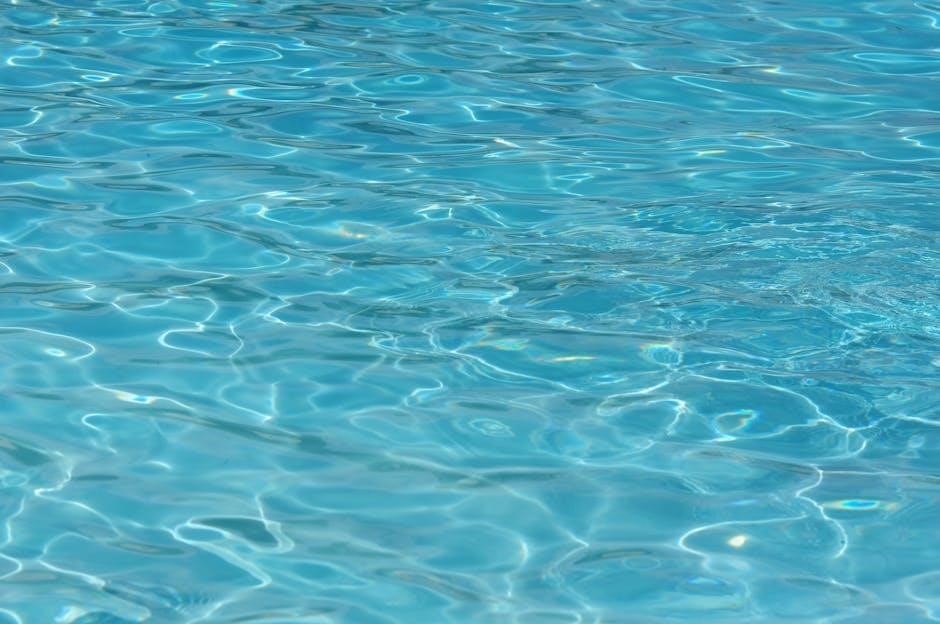
Heaters and Their Integration
Heaters are essential for maintaining a comfortable swimming pool temperature, especially in cooler climates. Proper integration of heaters into the plumbing system ensures efficient water heating and circulation. Gas, electric, and heat pump heaters are common types, each requiring specific plumbing connections. The heater is typically installed after the filter to ensure clean water is heated, then distributed back to the pool through return lines. PDF guides provide detailed diagrams for heater installation, emphasizing correct sizing and placement to avoid energy waste. Proper integration also involves safety features like pressure relief valves and check valves to prevent backflow. Regular maintenance, such as descaling and inspecting heat exchangers, ensures optimal performance. A well-designed heater system enhances swimming comfort while optimizing energy efficiency and system longevity.
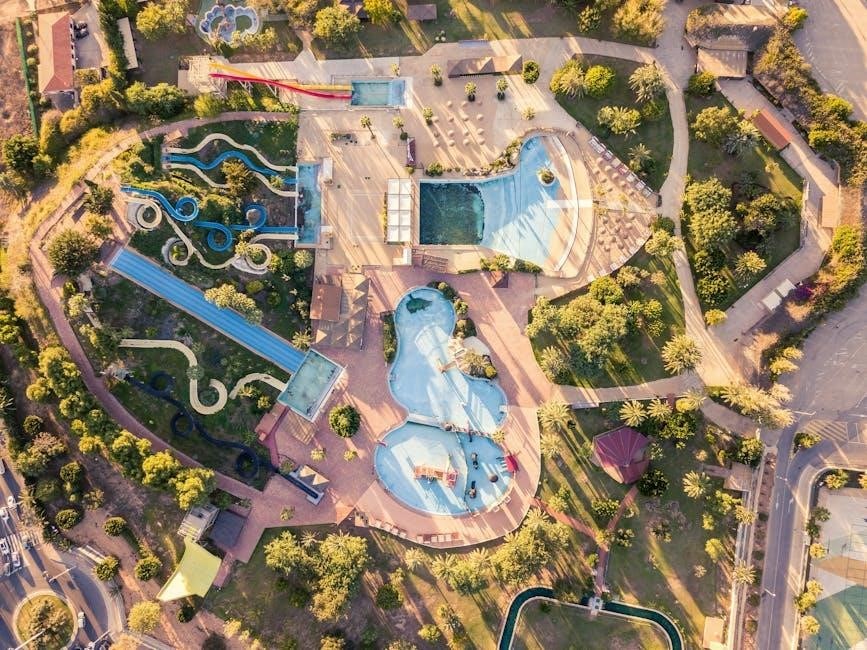
Design Considerations for Plumbing Layout
Designing a swimming pool plumbing layout requires balancing hydraulic principles, pressure distribution, and safety standards. Proper planning ensures efficient water circulation, minimizes energy use, and prevents potential hazards.
Hydraulic Design Principles
Hydraulic design principles are vital for a swimming pool plumbing layout, ensuring balanced water flow and pressure. These principles involve calculating pipe sizes, selecting appropriate materials, and positioning components to minimize resistance. Proper hydraulic design prevents dead zones, reduces energy consumption, and ensures efficient water circulation. It also helps maintain clean and safe water conditions by avoiding stagnation. By applying these principles, the system operates smoothly, extending equipment life and reducing maintenance needs. A well-planned hydraulic layout is essential for both functionality and longevity of the pool system.
Pressure Balancing and Flow Rates
Pressure balancing and flow rates are critical factors in swimming pool plumbing design. Proper balancing ensures even water distribution, preventing excessive pressure in certain areas. Flow rates must be carefully calculated to maintain optimal water circulation, avoiding dead zones and ensuring clean water. Balanced pressure reduces energy consumption and extends equipment life. Correct flow rates also support efficient filtration and heating systems. By adhering to hydraulic principles, designers can achieve a system that operates smoothly, maintains water quality, and ensures safe swimming conditions. Proper pressure balancing and flow rate management are essential for a functional and longevity-focused pool plumbing layout.
Compliance with Safety Standards
Compliance with safety standards is paramount in swimming pool plumbing design. Adhering to regulations ensures the system operates safely, minimizing risks like suction entrapment and waterborne contaminants. Standards such as AS1926.3 outline specific requirements for drain placement and valve configurations to prevent accidents. Proper pipe sizing and material selection are also critical to handle pressure and flow rates safely. Regular inspections and maintenance are necessary to uphold these standards, ensuring the system remains secure and functional. By following established guidelines, designers and installers can create a safe and reliable plumbing layout that protects users and meets legal requirements.
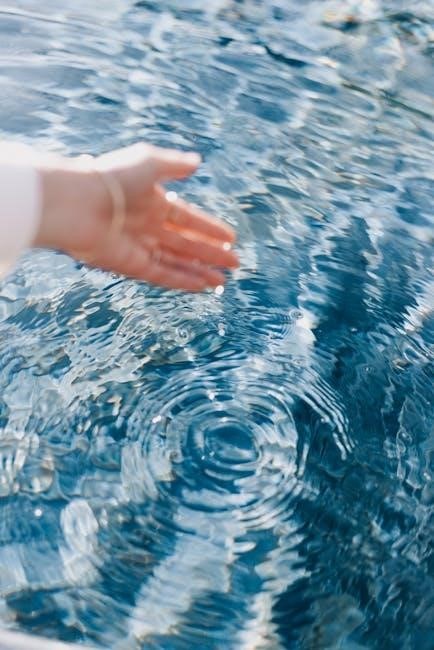
Installation Best Practices
Proper piping techniques ensure a leak-free system. Strategic valve placement simplifies maintenance. Use high-quality materials and ensure accessibility for future repairs and inspections.
Proper Piping Installation Techniques
Proper piping installation is crucial for a reliable swimming pool system. Use high-quality materials, such as PVC or CPVC, which are durable and resistant to corrosion. Ensure pipes are sized correctly to maintain optimal water flow rates and pressure. Connections should be secure, with proper use of primers and solvent welds to prevent leaks. Install pipes with adequate slope to avoid air pockets and ensure smooth water circulation. Pressure test the system before finalizing the installation to identify and fix any issues. Proper piping techniques also include labeling lines for clarity and ensuring accessibility for future maintenance. Following these guidelines ensures a safe, efficient, and long-lasting plumbing system.
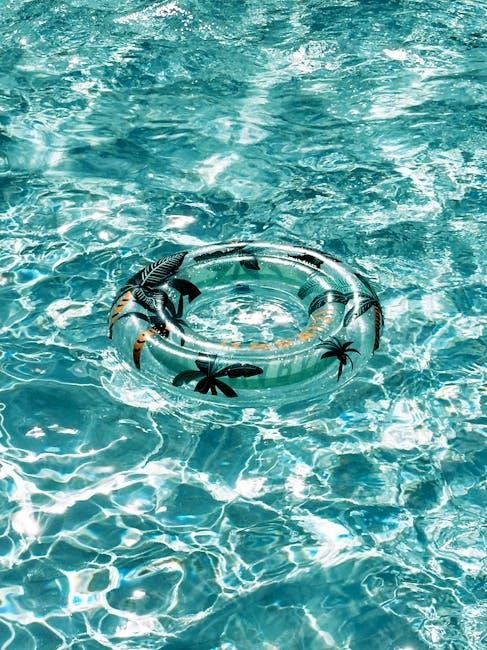
Strategic Placement of Valves
Valves play a vital role in controlling water flow within a swimming pool system. Strategic placement ensures efficient operation and easy maintenance. Position valves near key equipment, such as pumps and filters, to isolate components during servicing. Install check valves to prevent backflow and ensure proper water circulation. Ball and gate valves should be placed at strategic points, such as near skimmers and drains, to regulate water flow effectively. Ensure valves are accessible and visible for quick adjustments. Proper placement also aids in pressure balancing and reduces energy consumption. By thoughtfully locating valves, the system becomes more user-friendly and maintains optimal performance. This design approach minimizes downtime and enhances overall system efficiency.
Maintenance Access and Layout
Maintenance access and layout are crucial for ensuring the longevity and efficiency of a swimming pool plumbing system. Easy access to key components, such as pumps, filters, and valves, simplifies routine inspections and repairs. Design the layout to allow sufficient space around equipment for technicians to work comfortably. Grouping related components in a central location reduces downtime and enhances accessibility. Clear labeling of pipes and valves aids in quick identification during maintenance. Regular servicing, such as cleaning filters or inspecting pipes, is made easier with a well-planned layout. Properly designed access points also prevent damage to the system during servicing, ensuring optimal performance and reducing the risk of costly repairs over time.
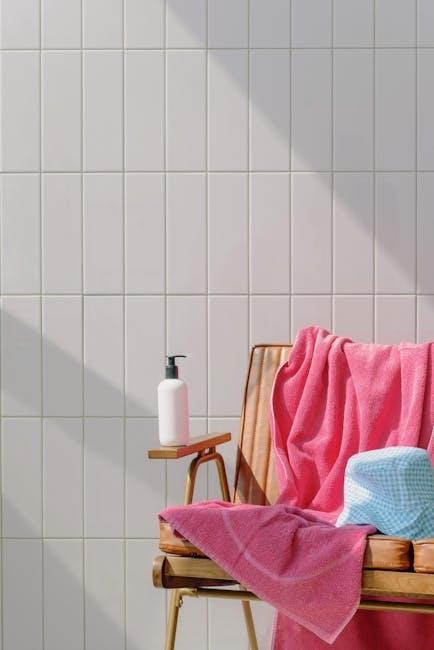
Troubleshooting Common Issues
Identifying and fixing leaks, clearing blockages in pipes, and addressing pressure imbalances are key steps in resolving swimming pool plumbing issues efficiently.
Identifying and Fixing Leaks
Identifying and fixing leaks in a swimming pool plumbing system is crucial for maintaining efficiency and preventing damage. A detailed plumbing layout diagram helps locate potential leak sources, such as pipe connections, valves, or faulty seals. Regular visual inspections and pressure tests can detect leaks early. Using a swimming pool plumbing layout PDF guide provides clear visuals to trace water flow and identify weak points. Common causes of leaks include loose connections, corrosion, or worn-out gaskets. To fix leaks, turn off the pump, inspect the system, and replace or tighten faulty components. Proper sealing and regular maintenance ensure long-term reliability. Addressing leaks promptly prevents water loss and maintains optimal system performance.
Clearing Blockages in Pipes
Clearing blockages in swimming pool pipes ensures smooth water circulation and system efficiency. Using a detailed plumbing layout diagram, identify where blockages occur, often near bends or valves. Common causes include debris, dirt buildup, or chemical residue. To clear blockages, shut off the pump and drain the affected section. Use specialized tools like pipe snakes or pressure washers to remove obstructions. For severe clogs, disassembling pipes may be necessary. Regular maintenance, including filter cleaning and chemical balance checks, helps prevent blockages. A swimming pool plumbing layout PDF guide provides step-by-step instructions for diagnosing and resolving pipe issues, ensuring proper water flow and maintaining the system’s integrity. Prompt action prevents potential damage and keeps the pool operational.
Addressing Pressure Imbalances
Pressure imbalances in swimming pool plumbing can disrupt water circulation and system performance. A well-designed layout, as detailed in a swimming pool plumbing layout PDF, helps identify and resolve these issues. Common causes include clogged filters, improperly sized pipes, or faulty valves. To address imbalances, inspect the system for blockages and ensure all components are functioning correctly. Adjusting valve settings or upgrading to larger pipes may be necessary. Regular maintenance, such as cleaning filters and checking pressure gauges, prevents imbalances. A balanced system ensures efficient water flow, reduces energy consumption, and prolongs equipment lifespan. Proper pressure management is essential for maintaining a safe and enjoyable swimming environment.
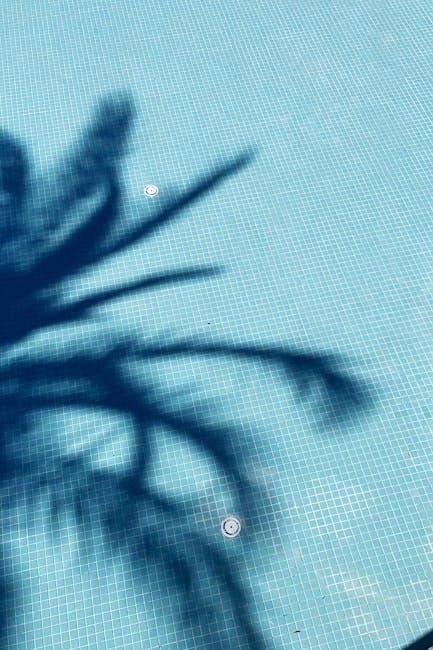
Resources and References
Swimming pool plumbing layout PDF guides provide detailed diagrams and instructions for designing and installing pool systems. These resources are widely available online for reference and planning.
Swimming Pool Plumbing Layout PDF Guides
Swimming pool plumbing layout PDF guides offer detailed blueprints for designing and installing pool systems. These documents provide comprehensive diagrams, pipe sizing, and component locations, ensuring proper water circulation and safety. They are essential for contractors and DIY enthusiasts, covering pumps, filters, and valves. Many guides comply with safety standards like AS1926.3, preventing hazards such as suction entrapment. These resources are widely available online, often free or for purchase, and include specific configurations for inground and above-ground pools. They are invaluable for troubleshooting and planning, ensuring efficient and safe pool operation. Using these guides helps maintain optimal water flow and system performance.
Online Tools and Diagrams
Online tools and diagrams provide interactive and visual resources for designing swimming pool plumbing systems; Websites like PoolWarehouse offer detailed diagrams and guides, showcasing pipe layouts, valve configurations, and equipment connections. These tools often include 3D models and step-by-step instructions for planning and installation. Many platforms feature customizable templates, allowing users to adapt designs to specific pool sizes and shapes. Additionally, online resources include troubleshooting guides and safety compliance checklists. Some tools even offer simulations to test water flow and pressure balancing. These resources are invaluable for both professionals and DIY enthusiasts, ensuring efficient and safe plumbing layouts. They also provide access to downloadable PDF guides for offline use, making them versatile and user-friendly.

